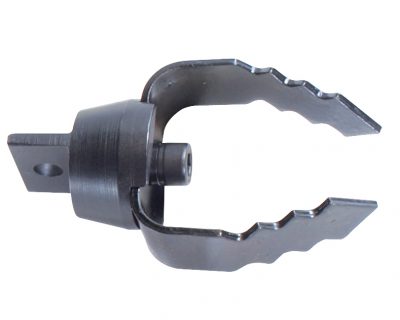Ask the Drain Brains: Choosing the Right Drain Cleaning Tool – Part 3

Ask the Drain Brains
By Marty Silverman
General Pipe Cleaners
Now that we’ve talked about which is the right machine to use for each application, the next question is: What is the right cutter to use? Everyone has their favorite cutter, just as everyone has their favorite fishing lure.
Clearing Sinks and Tubs: Small diameter drains require smaller, more flexible cutters to negotiate the tight bends and traps in the line. A boring gimlet or an arrow head are good starting tools for small lines. If you are having problems getting around a tight bend, you can switch to a down head boring gimlet or flexible arrow head. You can also adapt any cutter to become a down head by using a down head fitting between the connector and cutter.
Retrieving Loose Objects: Sometimes you have to be a hero and recover a lost ring, or get a child’s toy, or a diaper out of a drain. A retrieving tool (a cone shaped spring) is designed for just that. Once the open end of the spring hooks on to the object, stop the rotation of your machine and pull the cable out manually so you don’t lose your prized catch.

Cutting Tree Roots: Even though you’ll be tempted to go in with a big root cutter first, it’s better to start with a smaller cutter like the spear head or 2″ U-Cutter to get the water flowing first. Then switch to a larger root cutter like a heavy duty saw blade, root ripper, or ClogChopper. Don’t be impatient. Guide the cable slowly back and forth to cut through the stoppage thoroughly. If you go too fast, you risk getting caught and damaging the cable.
Clearing Grease and Ice Clogs: The best tool for these stoppages is a water jet, not a drain snake.
To get a free Tool Selection Guide, email info@drainbrain.com or call 800.245.6200.
